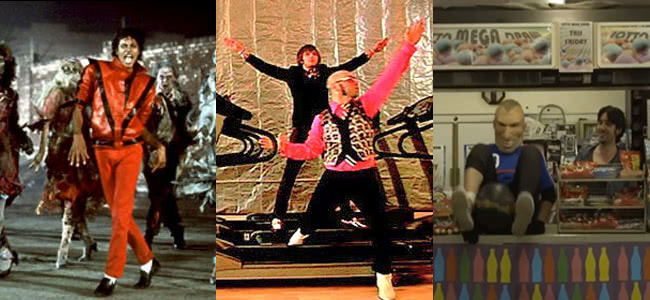More often than not, the production of a music video comes around only as an afterthought. But in an cyber-era where people are more likely to press play on a video player (as opposed to a music or audio-only player), it makes sense to start investing more time, more thought and more energy into this accompanying imagery.
We chatted to Sarah Hickey of Monster & Bear Productions, and founder of Warehouse Cinema (who are currently running a huge music video competition and showcase), about how artists can make the most of their resources and ensure that their clip remains cutting edge.

Sarah Hickey is one of three company directors at Melbourne-based video production house Monster & Bear, who operate out of studios and a warehouse facility in Brunswick. Coming from a background of music herself, Sarah was in numerous bands before delving into music video production. Since then, her business has grown considerably, and she spends most of her time working on TVCs, branded content and music videos.
[include_post id=”417544″]
Work With The Right People
Sarah: “Don’t be afraid to shop around when it comes to your production crew. Let’s face it, there’s a good chance that the production you’re about to ensue is not going to be cheap, so it’s got to feel right. In my opinion, you need at least four components to come together in a cohesive way, and for all parties to be on the same page.
If you are filming a narrative or in-camera action, these elements are Preproduction (Producer), Direction (Director), Cinematography (Cinematographer), and Postproduction (Editor, Colourist). Obviously, if you’re looking to produce an animation or something more low-fi, this would change a little.
To find catalogues of these people and their work, you can contact numerous guilds, societies and databases, all found with an easy google search.”
Trust your Creative Team
Sarah: “Assuming you have done your homework and found your A-team film crew, you then need to let go of that inner control freak, and allow them some creative input and freedom. Of course, have a concept, that’s not what I’m saying. But in my/our experience, this is how you get the best result from your crew anyway… They know how to maximise on their skills and abilities. So don’t be a control freak, collaborate with your crew and allow them to express their ideas too.”
Understand And Appreciate The Process
Sarah: “A lot of bands have approached us in the past, and made assumptions about the process (I.e. how long things take, how much things cost, etc). When you approach your respective film professionals, try to be a sponge. Soak up all the information you can about the film production process, which can then help you to better work with your team. If they say they’re going to need half a day to achieve a shot, they’re gonna need half a day to get the shot. I mention time as a good example, because it’s a common one, and there’s nothing worse than being so stressed on your music video set that you don’t get to enjoy the magic that is happening.”
Keep The Idea Simple, But Execute It Well
Sarah: This may be a matter of taste, but if you think about your favourite clip of all time, there’s a good chance that you could sum up the concept of that clip in one sentence. Imagine that sentence begins with “The one with…” or “The one where…”
For instance, Radiohead’s ‘No Surprises’… you could say it’s “the one where he holds his breath under water.” Or Coldplay’s ‘The Scientist’, “the one where everything goes backwards.”
You get the picture. Keep it simple, stupid. Then spend more of your time and resources executing that idea well!”
Don’t Skimp On Preproduction
Sarah: “Plan, plan, plan. And when you think you’re done planning, do a little more. Chances are you’re trying to reduce costs where you can, which also means you’ve probably tried to cram a two day shoot into one day, or a three day shoot into two. If that’s the case, you need a lot of elements to run smoothly on the day. And don’t forget to organise catering, that’s the easiest way to keep your crew happy!”
Be Willing To Make a Choice: GOOD, FAST, CHEAP: You Can Have Two, But Never All Three
Sarah: “Lastly, I want to leave you with this diagram. It will help you to avoid some of the most obvious mistakes when it comes to production. If you need something good and cheap, give your production team enough time to do it in the gaps of their other commitments. If you need it good and fast, remember it’s going to cost you dollars. If you need it fast and cheap, well, I’d strongly advise against that!”
[include_post id=”420695″]




































